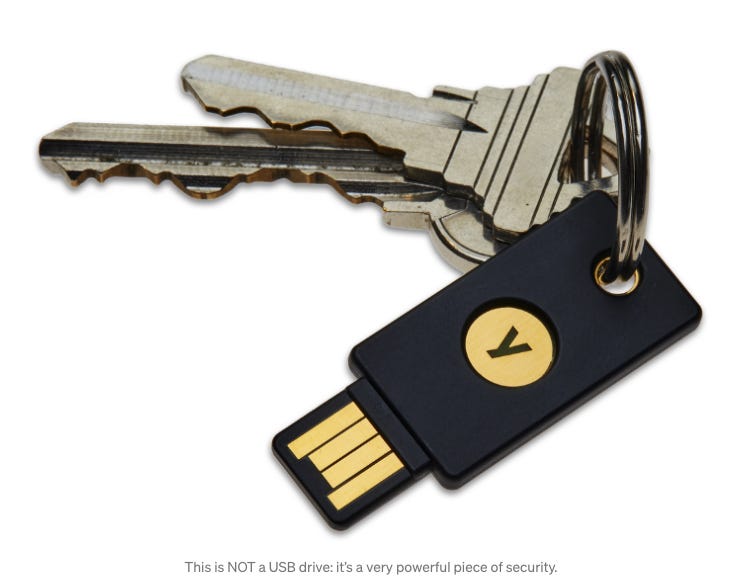Episode #61: The Literal Key to Your Online Safety
How a Small USB Key Can Change Your Life
My longtime readers know that I like to write about simple-to-use, powerful, and often free tools that can help make our online lives more secure. Today, I’d like to circle back to talk about one of those tools: security keys.
Security keys are physical devices that look like USB thumb drives. But unlike a USB thumb drive, once inserted, a security key validates your identity. How it does that is worth a quick explanation.
Security At Home
To get into my home, I need a key. Using my key correctly grants me entry into my home. Simple! Effective! A lock on a door provides one layer of security between my home and the outside world. While that level of security is enough for some people, many don’t see it as adequate. As a result, they add a second level of security: say an alarm system.
To bypass an alarm system, I need to know a password. Using my alarm password correctly prevents the alarm from triggering and calling the authorities. Simple! Effective! Having a lock on a door AND an alarm system provides two layers of security between my home and the outside world.
In the world of digital security, each layer you need to access something is called “authentication”.
Security in Technology
As we can better protect our homes, we can — and should — better protect our email, social media, banking, and online shopping accounts. We accomplish this by adding a second or third layer of authentication, a fancy term that just means “proving your identity”.
There are only three methods of proving your identity:
Something you have: a passport, driver’s license, or a house key from our home security example.
Something you know: a username, a government ID number, or the alarm passcode from our home security example.
Something you are: a unique part of you such as your fingerprints, your iris pattern, or your voiceprint.
USB security keys focus on the first two kinds of authentication: something you know and something you have.


